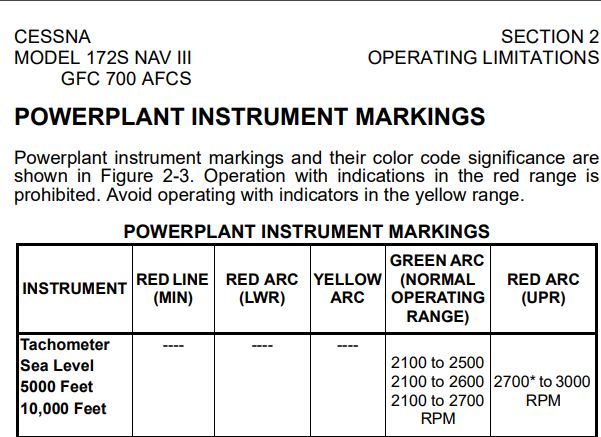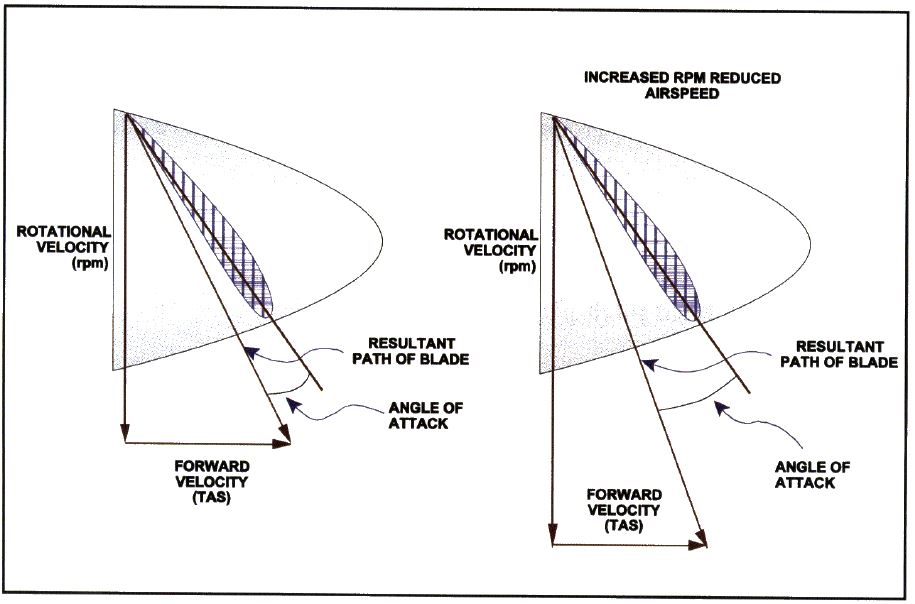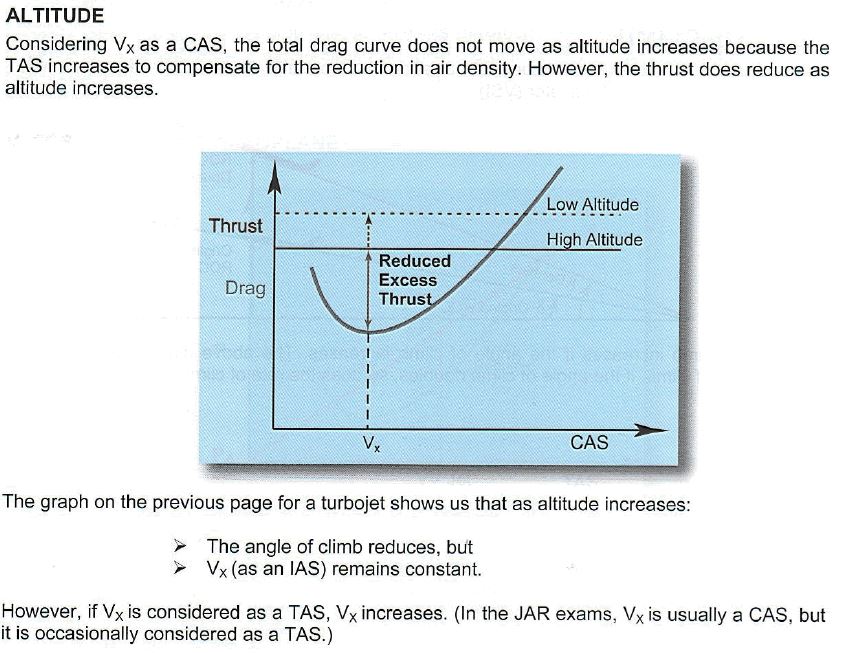I switched to Legacy flight model everytime I fly an airliner, much more fun and easier to land them. For GA I switch back to Modern model. Problem solved for me at last.
That depends if you have 172R or 172S. The R has 160HP and S has 180HP while they both have EXACTLY the same engines. It is done via higher RPM. So R has redline at 2400RPM and S has redline at 2700RPM. That 300 extra RPM will give you 20 extra HP. The extra RPM is gained with different flatter prop which has less resistance and hence allows engine to reach higher RPM.
Also on the ground standing still with full throttle, on R the RPM reaches 2130 whereas with S it reaches 2350.
But just having a prop with a flatter pitch would mean the airspeed at which propulsive efficiency is greatest is also gonna be lower, so what is purpose of this exactly? Better take-off and climb performance in expense of cruise performance?
While R can sustainably climb at about 750fpm then S can climb 1000+fpm. That is probably the biggest point. Also as the max RPM is higher, then also the RPM for all other flight stages are higher. Wth S it is normal to do cross country flight at 2300RPM. On downwind 2000-2100RPM is good. However for descent similar RPM like 1650-1700 orks for both R and S. So mostly you have to keep higher RPM on S but it does not affect the fuel burn which is still about 8 USGAL per hour.
Yes it can. I have Alpha honeycomb controls and rudders, v3 motion platform, buttkickers and wind generators with Sim Studio 2 software. 5-1 surround setup. When my HP reverb G2 comes and msfs release the VR hook You wont be far away from reality in this sim at least.
Had the same “issue”. You just need to set the mixture to lean and you’ll get around 2500-2600 RPMs.
Its not an issue, the static RPM should NOT reach 2500 - 2600 RPM, not in the sim and neither in real life. The RPM of any fixed pitch propeller is depending on the TAS. At sea level, standard conditions at full throttle the static RPM should be 2300 - 2400 RPM (according Cessna 172S POH), during take-off roll while speed increases the RPM increases.
If you would be able to achieve maximum rated RPM already on the ground at zero speed this would mean that in cruise you would be able to far exceed the maximum rated RPM on a fixed pitch propeller.
Sure that it’s not IAS/CAS?
My bad… IRL I fly a Cessna 172N and I have a Vy of 75KT with the engine running at around 2500 RPM. In FS2020 if I don’t touch the mixture and want to have a climb speed of 75KT the rate of climb is much lower than IRL… (btw. I fly at 1670ft. amsl)
I thought the same but apparently not according to Oxford 
Makes sense now I’m thinking about it, the relative airflow is depending on the actual forward velocity of the aircraft hence True Airspeed.

Correct, thanks.
IAS/CAS is just the reading of an instrument (the airspeed indicator). TAS is the airspeed the aircraft actually “feels” as it travels through the atmosphere, and is the only value that can be used to calculate performance. It varies with altitude and air temperature. IAS becomes increasingly in error (lower than TAS) the higher an airplane flies.
Yes, classic case of a brain fart on my part. If it’s about performance/energy you need TAS for the calculation. E.g. jet engine thrust.
I wouldn’t say the aircraft is “feeling” TAS when travelling through the air. The dynamic pressure the aircraft is subjected to during flight is the CAS and not the TAS. There is a reason why airspeed indicators are indicating IAS and no effort is being made to correct this into TAS. The CAS is directly related to the mass of the air passing over the wing per unit of time, both lift and drag and therefore all other aircraft performances are directly related to the CAS and not TAS.
All the aircraft inflight performance is calculated using CAS, you won’t find any true airspeeds in any performance tables. For example, an aircraft stalls at a constant CAS (putting aside any compressibility effects), if the aircrafts stall speed would be given as a TAS this would not be constant value and increase with decreasing density same is true for practically all airspeeds. TAS is important however for the calculation of groundspeed which is in turn is important for range, climb gradient and descent angle calculation (as soon as you bring the ground into the equation TAS becomes relevant). And almost forgot, for the calculation of Mach number, TAS is of course important.
Its from an old performance book but below a drag curve example:
This is not a prop btw, on a prop the Vx increases (as a CAS) with increasing altitude while the Vy decreases with increasing altitude.
Yes, I was thinking of “performance” in terms of navigation. You are absolutely correct that CAS/IAS is a direct indication of the dynamic pressure the aircraft is experiencing at a given moment.
BTW, I have noted that there is a significant bug in the MSFS instrument indications regarding the relationship between displayed IAS and Mach/TAS at higher altitudes. It seems to affect all aircraft capable of high altitude flight. In a nutshell, the IAS reads much higher than it should for a given Mach/TAS. At FL380 the IAS reads almost 20 knots higher than the correct value for a given Mach.
Since there are no winds aloft at this time in the US, ground speed and TAS are the same, and I have checked displayed ground speed against the time it takes to travel between waypoints of a known distance, and it appears to be perfectly correct, so I think that Mach and TAS are accurate, but IAS is not at higher altitudes. The relationship between TAS and air temperature also appears to be correct.
This very same bug existed in FS9, FSX, and still exists in P3D. (X-Plane is 100 percent accurate at all altitudes). In those platforms the “high IAS” bug is only 4 or 5 knots at altitudes in the FL300-400 range. It is a lot worse in MSFS. In the other platforms, 3PDs like PMDG and FSL have always had to write custom routines to derive the displayed IAS from the sim’s internal Mach, rather than using the sim’s internal IAS directly.
I did file a Zendesk bug report, during the Alpha, and it has been marked “solved”, but that doesn’t mean it is fixed yet.
Since PMDG is apparently working closely with Asobo behind the scenes, I figure they will be in a better position to help Asobo fix the issue, “developer to developer” than anything based on bug reports from end-users. PMDG will undoubtedly notice the bug as they develop their NG3 product (if they have not already seen it).
Interesting  . You did take into account that temperature remains constant above FL360 in standard atmosphere? I assume the Airbus shows TAS somewhere on the bottom ECAMS display.
. You did take into account that temperature remains constant above FL360 in standard atmosphere? I assume the Airbus shows TAS somewhere on the bottom ECAMS display.
Local speed of sound can be calculated by 38.94 * square root of temperature in Kelvin, TAS / LSS = Mach No.
Although upper wind direction and velocity is not currently working in the US, the injection of temperature does appear to work. The temps I have seen at the flight levels in MSFS with live weather running appear to closely mirror the GFS forecasted temperatures for a given location and altitude from the weather pages in Foreflight. Being summer, the temps are usually ISA + at the moment.
I am using an electronic EFB to calculate expected TAS at a given pressure altitude and air temperature.
There is also a bug in the TBM where the ISA deviation on the PFD is referenced to sea level at all times, rather than the current pressure altitude. I did report that to Zendesk.
I have not tried a flight at high altitude using the default clear sky preset to see if MSFS is using the standard ISA lapse rate as FSX and P3D do when no weather injection is being used. At sea level, MSFS does give the ISA standard 15C on the ground with the clear sky preset active.
Just a thought, could the 20 kts difference be the compressibility effect? I’m not 100% sure what the effect of compressibility is but I think it makes the airspeed indicator to overread… Maybe MSFS2020 is actually the only one taking this into account. We can’t simply go from CAS directly to TAS, we need to take compressibility into account, so IAS - CAS - EAS -TAS.
On the Airbus this should be accounted for, the airspeed indicator should read EAS.
Edit: actually the airspeed indicators on both Boeing and Airbus read CAS and the displayed speeds are corrected for compressibility effect to show at the correct CAS. Stallspeed therefore increases (in terms of CAS) on the speed tape.


